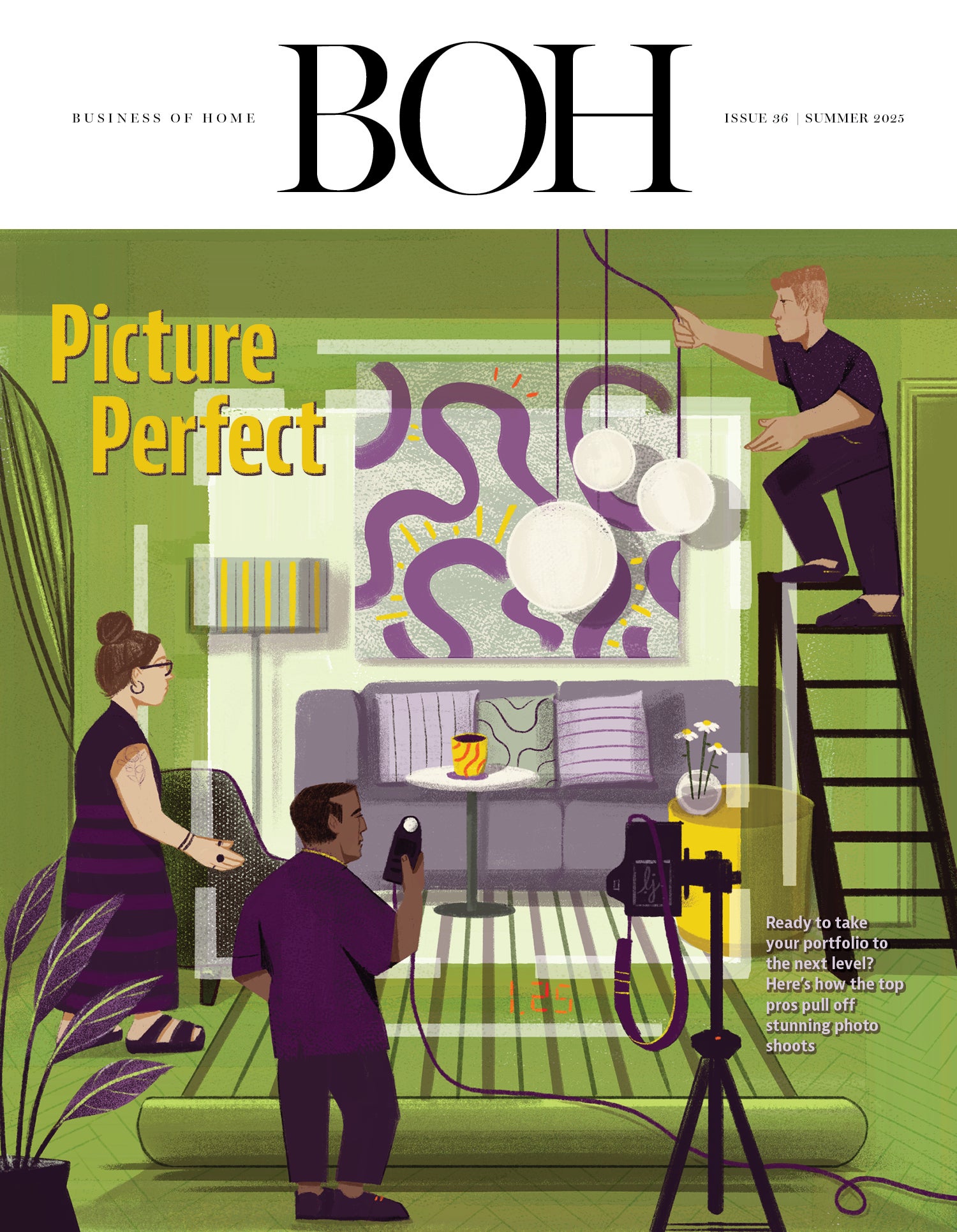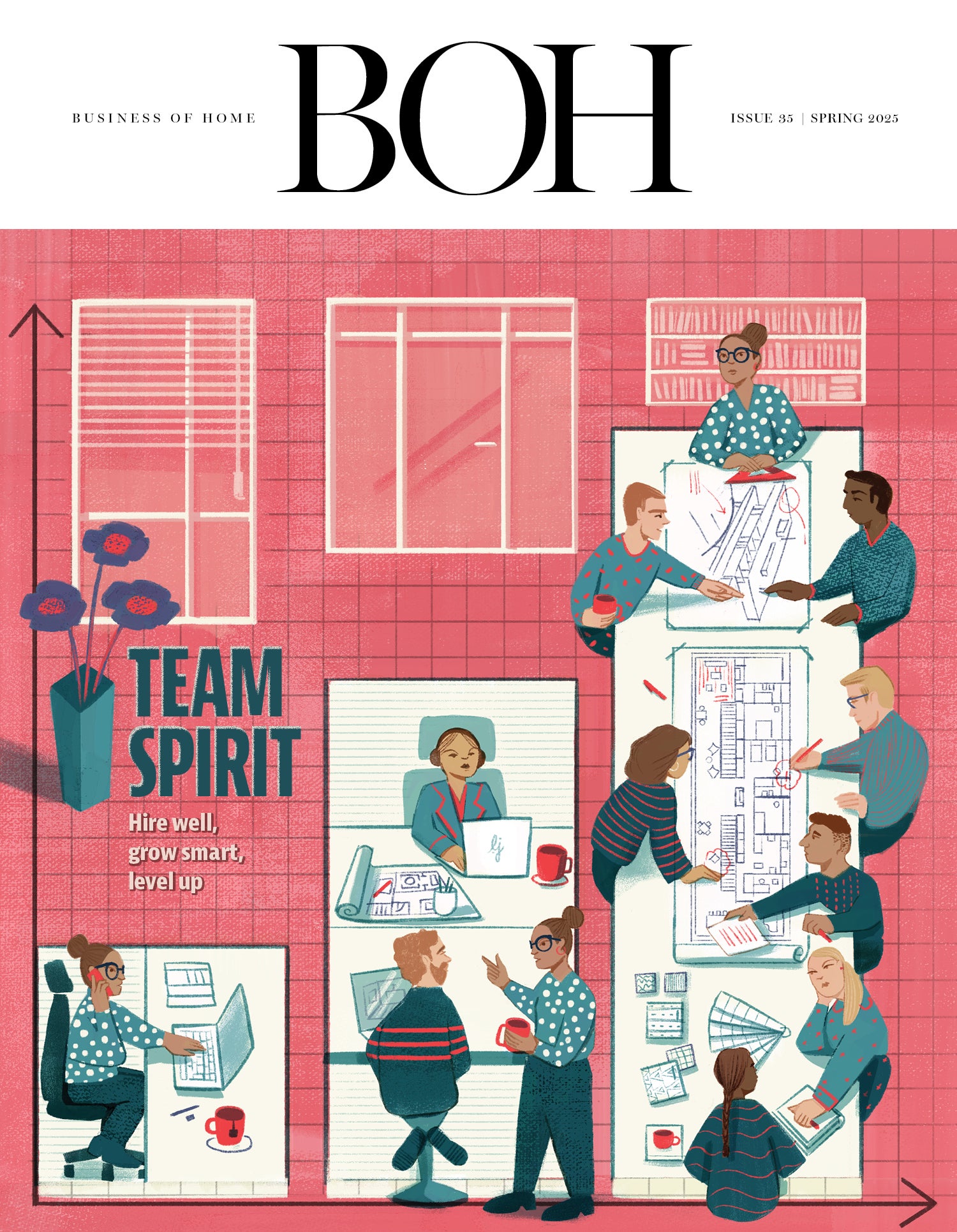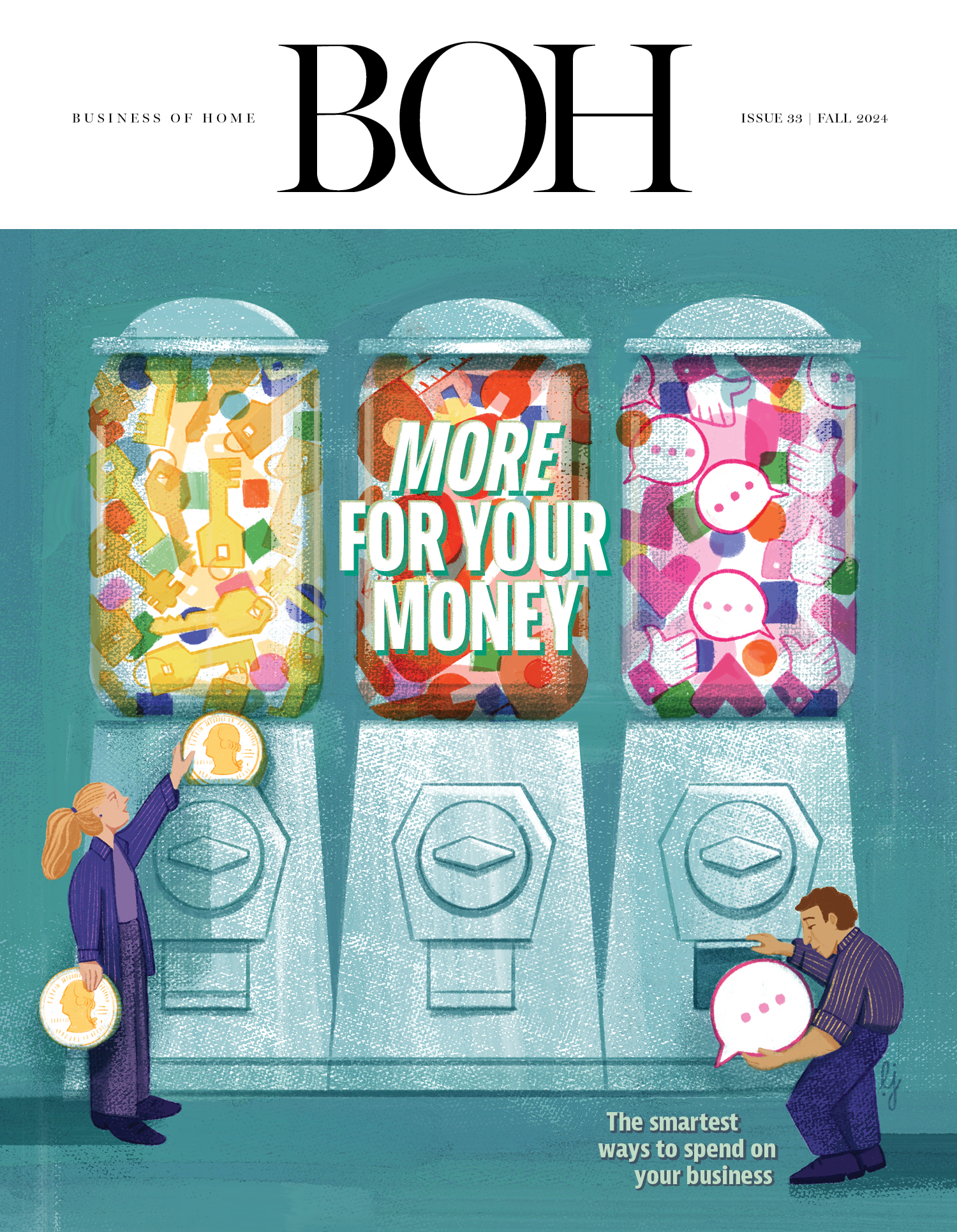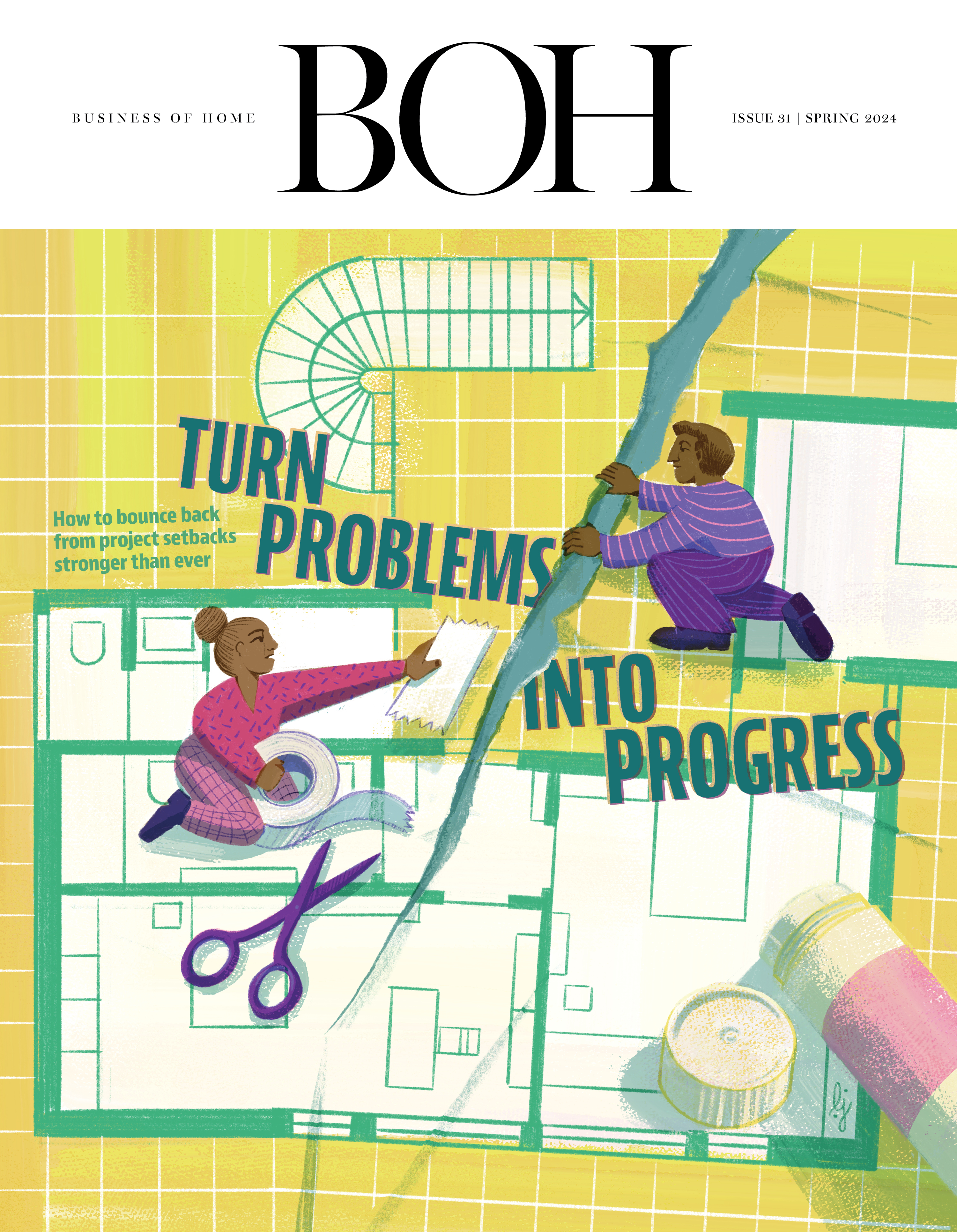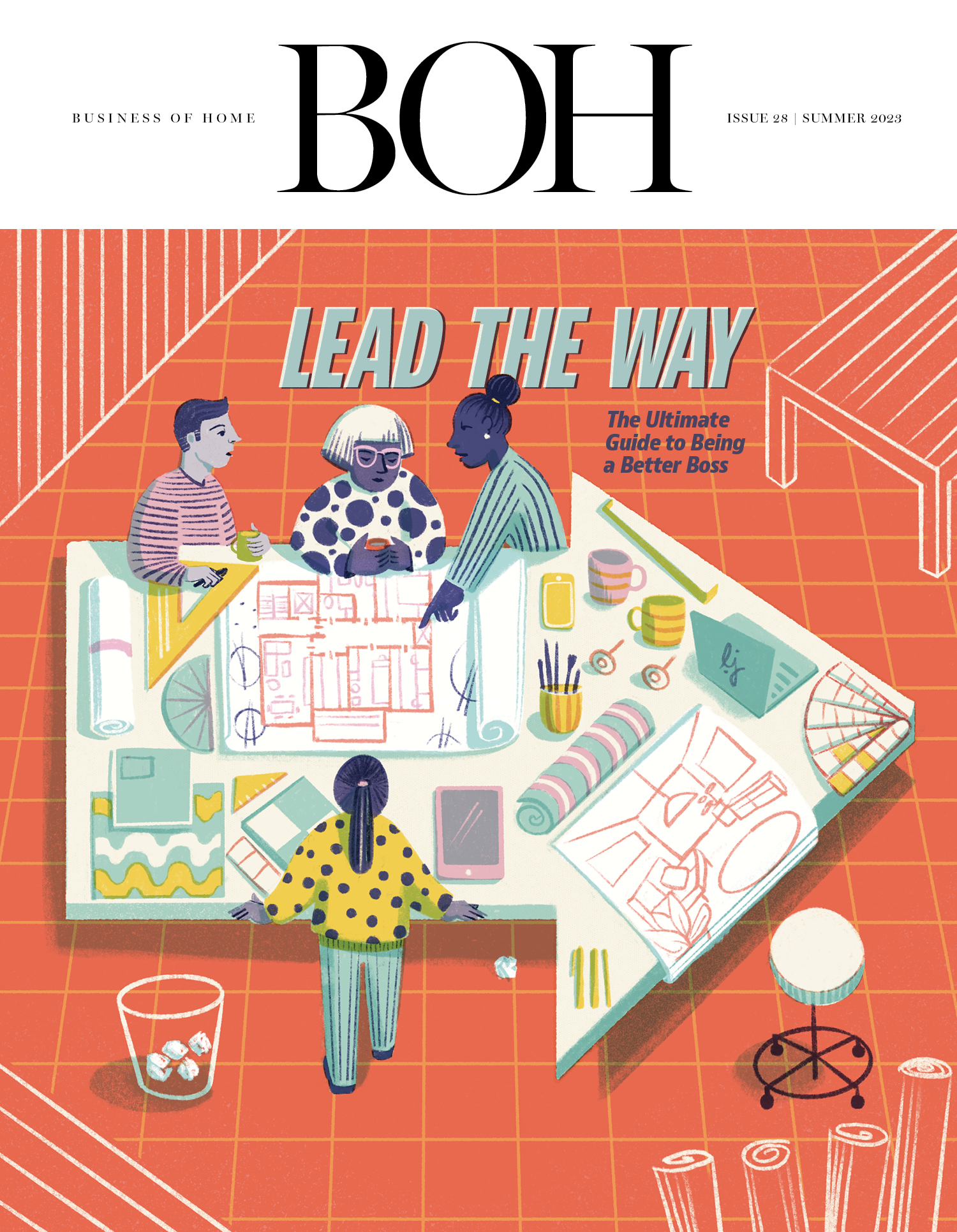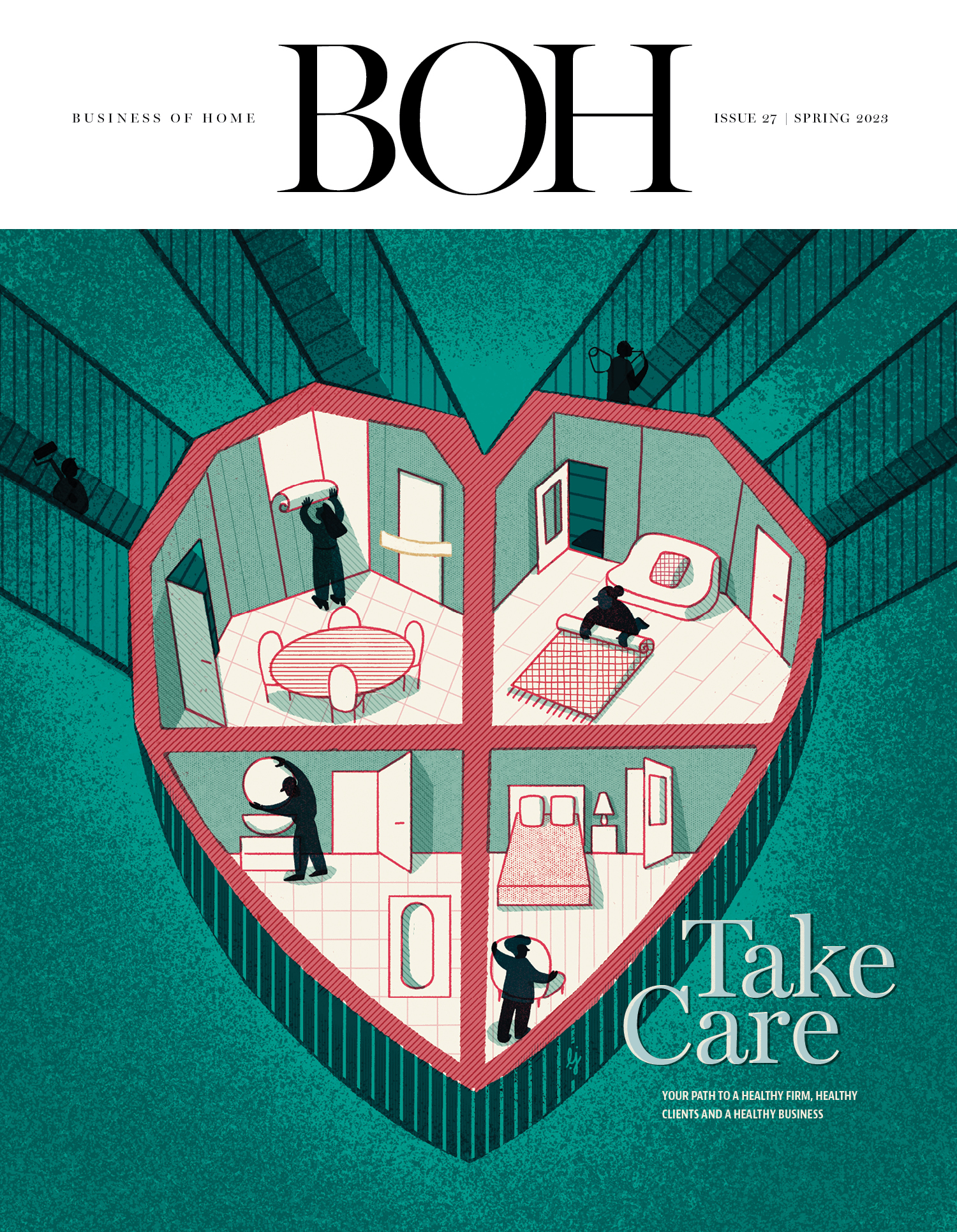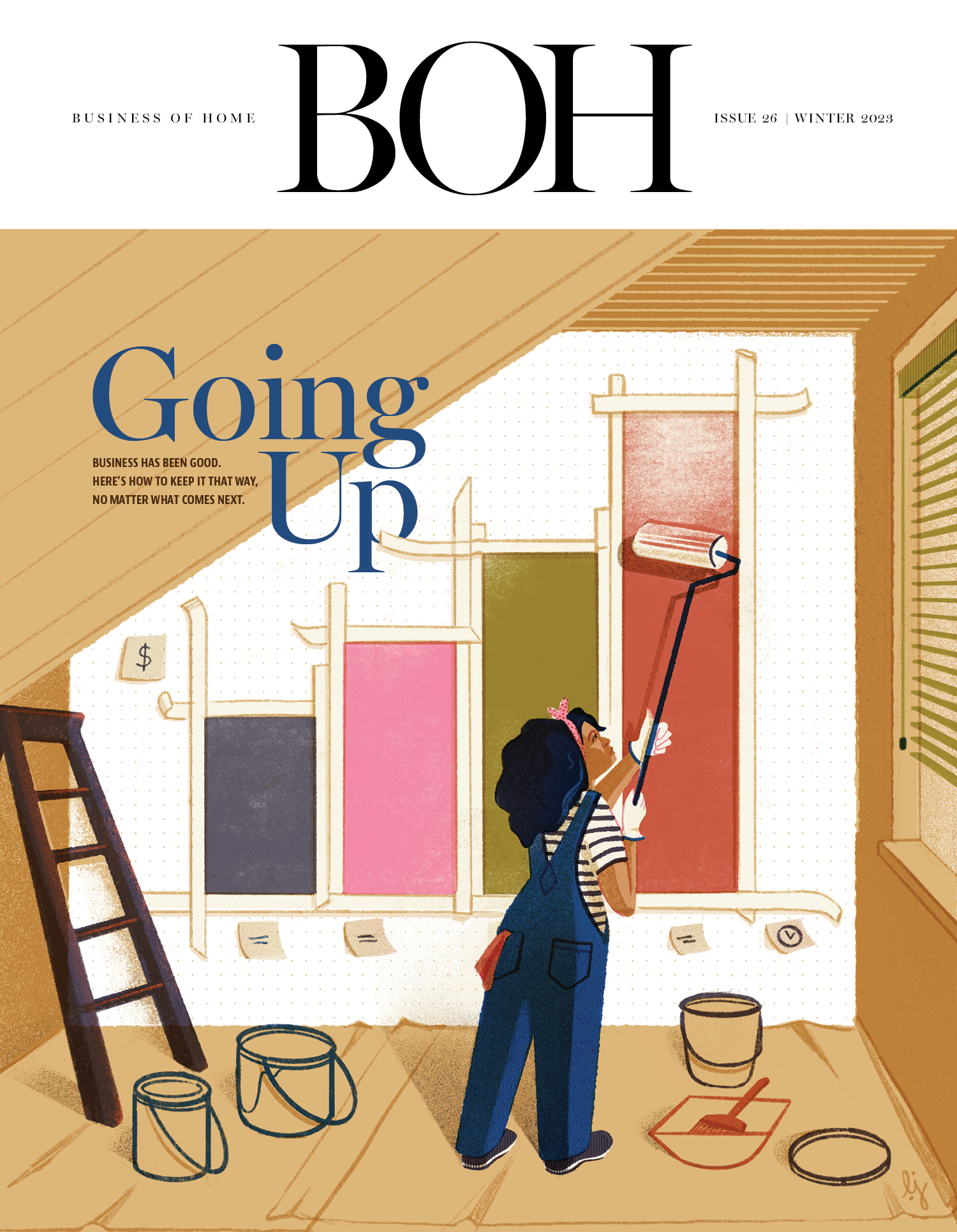Accidents happen to everyone, even with the best-laid plans. This week, we asked six designers—Melissa Anderson, Jaque Bethke, Janie Hungerford, Alexander Nikban, Candice Quinn and Emily Tucker—how they let their clients know when something goes wrong during a project.

In-Person Delivery
“The best way to tell a client you made a mistake is face-to-face—we develop deep relationships with our clients and build trust. When you tell a client in person, and give them solutions so they have choices, you are maintaining that level of trust they expect. When we make mistakes, it’s about how we handle them, not the mistake itself. We also act on behalf of our clients if a vendor or consultant makes a mistake, advocating for a resolution. We don’t just act as designers—we are fostering a relationship with the people we work with, and transparency is the only way to move through mistakes. Offering creative solutions can make the client feel at ease, knowing that if something were to come up in the future, you would follow through on your commitment to transparency and high-end client service.” —Alexander Nikban, Studio Alexander, San Francisco

Get Down to Brass Tacks
“Mistakes can happen in any industry—even with the highest level of detail and organization, we are all human. What matters most is how that information is communicated, as it directly builds and sustains trust with our clients. I make it a priority to communicate quickly and transparently in order to manage expectations and ensure clarity. If a mistake occurs and it is my responsibility financially, I take full ownership and make certain it is remedied. Depending on the scale of the issue, I believe meeting the client in person is always best, as that personal, face-to-face approach reinforces trust and care. Above all, I want our clients to feel completely looked after—this commitment is central to the integrity of Hungerford Interior Design. As a referral-based company, our reputation is only as strong as our last project, and I take that responsibility very seriously.” —Janie Hungerford, Hungerford Interior Design, Vancouver, British Columbia

Have a Game Plan
“I once had a boss tell me never to apologize or show fault to a client. The unease I felt with that way of handling things I [still] remember many years later. That’s not how we approach issues when they arise. Everyone knows that mistakes happen, and I think what’s important is showing a willingness to make things right. Our clients need to feel we are their partners that they can count on throughout the length of their project. Making sure our clients are happy is our number-one priority. Whenever possible, before presenting an issue to a client, I make sure we have a solution to the problem. I find this removes a lot of the stress that comes with things going wrong. Having a clear solution and a game plan is a must. After all, I often say a good deal of what we do is problem solving. There are things you can’t always control, especially in construction projects. These types of projects usually have several parties involved, and mistakes can affect everyone’s timelines and profit. Keeping collected with a clear head to find the best solution, I find helps everyone involved to keep things moving forward. It took years [of experience and practice] to reach a point of managing to stay calm under pressure.” —Melissa Anderson, OAD Interiors, Brooklyn

Lead With Transparency
“We believe that authenticity is the foundation of every client relationship. From the very beginning, we set the expectation that design is a journey—one filled with artistry, craftsmanship and, at times, unpredictability. People aren’t perfect, nor are the industries we rely on, and there will always be factors outside of our control: a vendor suddenly closing its doors, a product arriving damaged, or a shipping delay that no one could foresee. When moments like this arise, we approach them with complete transparency. I recall a project where we had purchased and paid in full for a product that never arrived. Only later did we discover the company had shut down without warning. Sharing that kind of news with a client is never easy, but because we had built our relationship on honesty and trust from the start, we were able to have a direct and empathetic conversation. Our philosophy is simple: If the client’s happiness is at the center, then even challenges can be navigated with grace. It’s about being responsive, staying empathetic and guiding clients with clarity. When handled with integrity, those difficult moments can actually deepen the trust that leads to long-term partnerships—and those referrals that mean so much in our business.” —Jaque Bethke, Jaque, Scottsdale, Arizona

Act Fast
“When it comes to mistakes, I believe in addressing them right away with complete honesty. Trying to cover something up or delay the conversation only erodes trust in the long run. I’ve found that clients appreciate transparency, especially when you not only explain how the mistake happened but also come prepared with a solution. Being upfront builds more trust than pretending everything is perfect—it shows accountability and professionalism.” —Emily Tucker, Emily Tucker Design, Boulder, Colorado

Find a Solution
“In our industry, mistakes are inevitable. What matters most is how they are addressed. At London Pierce Design, we have strong systems in place to minimize errors and double-check details. Still, with the countless micro decisions that occur in construction and design, there are moments when something may slip through. When that happens, my first step is to fully assess the situation, take ownership and quickly develop a solution. I communicate openly with the client, not only acknowledging the mistake but also presenting a clear plan to resolve it. By approaching the conversation with both accountability and a path forward, we keep the project moving and reassure the client that we are in control. I’ve found that clients value this level of transparency and professionalism. In fact, when handled with honesty and efficiency, even mistakes can strengthen trust, demonstrating that our commitment extends beyond just the design to integrity and long-term client relationships.” —Candice Quinn, London Pierce Design, Scottsdale, Arizona



